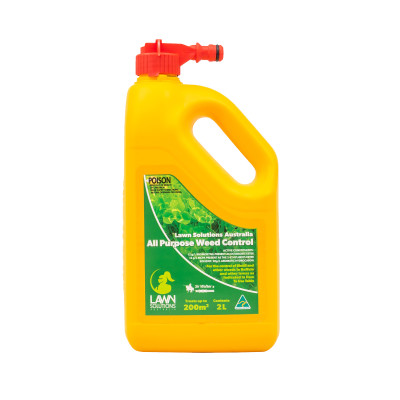‘A weed is just a flower growing in the wrong place’ – This is definitely true in many situations.
One of the quickest and easiest ways to manage many types of weeds is to simply pull them out by hand. If you have some undesirable ‘weeds’ growing in your lawn, then removing them in most cases like this is pretty straight forward. But there are some weeds you shouldn’t pull out by hand.
By doing so, you can actually make the spread of these weeds worse. This is usually as a result of leaving nasty bulbs or nuts behind in the soil, that continue to spread and multiply out of sight before emerging again. A lot of action can be occurring below the ground and it’s important that this is considered before going straight in there for the pull.
If you have any of these particular weeds in your lawn, here’s what you need to know…
Nutgrass
A noxious weed, nutgrass is part of the Sedge weed family which also includes Mullumbimby Couch. Nutgrass gets its name from the nut-like tubers found on the roots (rhizomes) of the plant. This weed is identifiable as it is usually a lighter green than the rest of your lawn and tends to grow taller. Nutgrass has 3 blades that shoot up from the stem and has a triangular stem rather than a circular stem like most grasses.

Treatment
If you find Nutgrass in your lawn, it is best you act quickly before it spreads and becomes almost impossible to remove. If there is only a small amount, you can remove it by digging it out with a small spade, but you have to be extremely diligent with this to ensure there is no roots or bulbs left in the soil, as Nutgrass will reappear if left behind. Simply pulling the nutgrass out by hand will leave these nut-like tubers in the soil, allowing them to continue to spread.
If there is a large amount of Nutgrass in your lawn, you will need to treat it with a selective herbicide such as Sedge Control.
Soursob
Soursobs spread with clover-like leaves along the ground, producing flowers with 5 petals and have a long white tuberous root. Cooler conditions are when Soursobs like to appear in Autumn and Winter. The problem with Soursobs is that they are extremely resilient to herbicides and have a fast-growing system of onion like bulbs growing beneath the surface. In addition to this, they have small secondary bulbs known as bulbils. These bulbils are attached to the root system and each Soursob can have as many as 20 bulbils! When you remove the plant, the bulbils are left behind that then detach and grow into a new plant and the cycle continues.

Treatment
Completely eradicating Soursobs from your lawn will take a bit of time and effort. It is not recommended to remove them by hand, as the bulbils will break off and continue to grow beneath the soil allowing it to reappear. There are also no selective herbicides readily available for domestic lawns that will target the Soursobs, so you will need to take a few other steps to try and remove it. Mowing them off regularly will weaken the plant helping your grass to overcome the infestation. Bulb exhaustion occurs just before flowering, so this is the perfect time to implement your mowing and non-selective herbicide application, when the plant is weak. This is the only stage that physical removal will be an option, by digging up under the plant and removing the soil around it as well.
You will be able to tell the plant is at the exhaustion stage if you carefully dig up a plant – the adult bulb will be shrivelled and the root under the bulb won’t have grown yet or is extremely young and thin. Spot spraying carefully or using a weed wand with an application of Glyphosate (Round Up or Zero) will be your best course of action, but you must be careful when applying as it will kill your turf as well. Acting quickly will also help you to stop them in their tracks before they produce more bulbils.
Onion Weed
Onion weed is a menace in lawns and garden beds right around Australia. It is one of the worst weeds that you can have take-hold in your yard as it is also one of the most difficult to get rid of.
Onion weed is a perennial with thin green strappy leaves growing from a mainly white bulb which gives off an onion smell when crushed. Flowers grow at the top of a long stalk and are mainly white.

Treatment
Eradicating onion weed starts with removing as many of the plants as possible. Do not try to pull the plant out of the ground or shake excess dirt back off into the hole or compost. The small bulblets tend to pull away from the mother plant when pulled, which leaves more bulbs in the ground that will rapidly grow. If possible, dig the weed-clump out of the ground with a spade or a trowel, and throw the entire clump away.
The next step to total eradication of onion weed is to treat the area with either a non-selective herbicide like Roundup or even boiling water.
If you have an extensive problem, onion weed and onion grass (Guildford Grass) can be treated with a selective herbicide called Duke.


